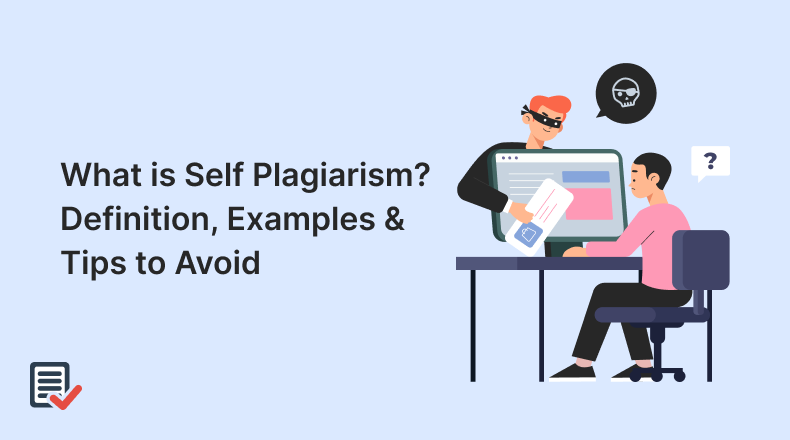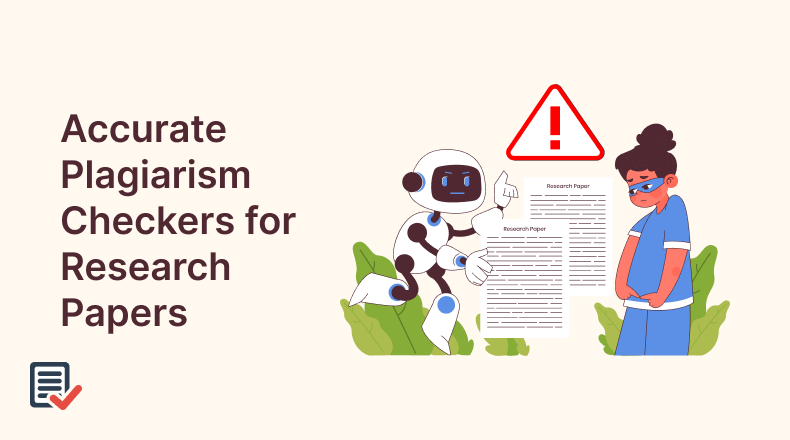
Is self-plagiarism confusing you? Well, you are not alone–many early-career researchers don’t fully grasp what it is. Understandably, if you wrote something, you have the freedom to use it however you want. But unfortunately, that’s not true. Academic ethics dictate that it’s wrong to reuse your published content without proper citation.
Thus, it can severely damage your credibility and lead to serious consequences, like delayed publications or legal issues. Hence, you first need to properly understand what self-plagiarism is and what its consequences are to judge whether it’s a crime or not. So keep reading.
What is Self-Plagiarism?
Self-plagiarism is using your own previously published article or research in your new work without properly citing it. In easy words, It can be considered as stealing from yourself. Although it is not as serious as plagiarizing someone else’s work, it is still counted as academic dishonesty.
For instance, if you use your previous work in your new research without citing it properly, you are misleading the audience by presenting your old work as new. This can seriously question a writer’s credibility and honesty.
Following are some common scenarios of self-plagiarism:
- Copying text from your own past work.
- Reusing research data without citation.
- Submitting the same paper to multiple journals.
- Not citing your previous work properly.
- Using your own figures or tables without credit.
Examples of Self-Plagiarism
Here are some clear examples of self-plagiarism to help you better understand the concept.
Example 1:
Submitting a research paper written for a sociology class as a new assignment in a psychology class.
Example 2:
Researchers publish parts of their past study in a new article without reference, misleading readers to think it’s new data.
Example 3:
A writer submits the same article or large portions of it to multiple publications, violating originality expectations.
Example 4:
Copy-pasting a blog post on LinkedIn without indicating it’s a republished piece.
Consequences of Self-Plagiarism
Although self-plagiarism may appear harmless since it involves your own work, it can have serious consequences. Thus, it is essential to avoid it to preserve the integrity and value of your research.
Here are some reasons why you should avoid it.
1. Misleading Readers:
Reusing your own work can mislead readers into thinking the content is new and original. When writers can reuse their previous work in new content, they usually end up damaging their own credibility.
2. Violation of Academic Integrity:
Many institutions have policies against self-plagiarism, treating it similarly to traditional plagiarism. This can lead to disciplinary actions.
3. Inflated Publication Records:
By reusing your previous work, you can artificially increase your publication count, misrepresenting your contributions and impact.
4. Lack of New Insights:
Continuously reusing the same material may hinder your growth as a writer or researcher, limiting the development of new ideas and insights.
5. Ethical Concerns:
Academic and professional settings may consider it unethical since it prevents others from seeing your best and most current work.
Tips to Avoid Self-Plagiarism
Avoiding self-plagiarism is essential for keeping your credibility intact. It’s easy to prevent if you know what to do. By following a few simple steps, you can keep your work fresh and original.
Here are some quick tips to avoid self-plagiarism.
1. Know What Self-Plagiarism Is
Self-plagiarism occurs when you reuse your previously published work without proper citation, misleading readers into thinking it’s new. By identifying the different forms of self-plagiarism, you can take the right steps to avoid it. Additionally, make sure you are familiar with examples of plagiarism so you can identify potential issues in your writing.
2. Cite Your Work
Whenever you use your previous research in your new content, don’t forget to cite it properly. This not only respects academic integrity but also strengthens your argument by showing how it builds on previous work. Different fields may have specific citation styles (e.g., APA, MLA), so be sure to use the correct one based on your discipline.
3. Run a Plagiarism Test
Conducting a plagiarism scan on your text before submission has always been the best practice. It can help you identify any instances of potential self-plagiarism that exist in your text. Checking your paper for plagiarism can reveal similarities with your earlier work. So that you can make necessary changes to enhance your overall writing quality.
4. Rephrase Content
If you want to utilize your previous research in your new content, then rephrasing it can be the best way to avoid self-plagiarism. Therefore, instead of lifting sentences directly from your earlier works, re-swap the words to give them a new look while keeping the main context. It also helps you produce your tone according to the new audience to enhance the relevancy of your paper.
Conclusion:
To wrap up, self-plagiarism is a serious issue for writers and researchers. It’s not just about reusing your work—it’s about maintaining your credibility. Misleading readers can damage your reputation. Therefore, don’t forget to cite your past work, rephrase when necessary, and perform regular plagiarism checks. Staying original helps you preserve your integrity and makes your contributions valuable.







